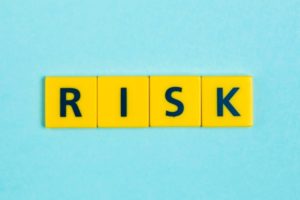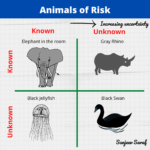While performing consequence modeling we are often required to evaluate damage to population and property from a fire.
Thermal radiation impact to humans from a fire should be based on the dosage – i.e. the intensity of exposure and the duration of exposure. Furthermore, such an impact from thermal radiation on population should consider the protection offered by clothing/buildings and the ability of a person to find a shelter from radiation.
Usually the surface emissive power for a hydrocarbon flame is 180 – 250 kW/m2 and the radiation intensity drops as the square of the distance.
What critical thermal radiation values should one use in consequence modeling? Following table provides a rough guidance on typical impacts from heat exposure.
Critical Thermal Radiation Values
| Radiation Intensity (kW/m2) | Level of Damage |
|---|---|
| 37.5 | Sufficient to cause damage to process equipment |
| 25 | Minimum energy required to ignite wood at indefinitely long exposure |
| 12.5 | Minimum energy required for piloted ignition of wood, and melting of plastic tubing. This value is typically used as a fatality number |
| 9.5 | Sufficient to cause pain in 8 seconds and 2nd degree burns in 20 seconds |
| 5 | Sufficient to cause pain in 20 seconds. 2nd degree burns are possible. 0 percent fatality. This value of often used as an injury threshold. |
| 1.6 | Discomfort for long exposures |
Does that mean everyone exposed to 12.5 kW/m2 will die? Hardly! Let us look in detail at the heat injuries.
Thermal radiation hazards can manifest in terms of burns of different degrees:
- First-degree burns are superficial injuries that involve only the epidermis or outer layer of skin.
- Second-degree burns occur when the first layer of skin is burned through and the second layer, the dermal layer, is damaged but the burn does not pass through to underlying tissues. Usually second degree burns heal within three weeks.
- Third-degree burns involve all the layers of the skin. While a third-degree burn may be very painful a burnt person feels little or no pain because the nerve endings have been destroyed. As the burns heal, dense scars form.
Street clothing is expected to provide 3 times more time to feel the pain from thermal radiation at 5 kW/m2. An average person is clothed over 80% of the body. Note that if the clothing catches fire, a severe burn injury is expected and 75 kW/m2 is considered a threshold value for spontaneous ignition of clothes. When exposed to a heat source or in case of emergencies, human beings are expected to take an evasive action such as ambulate away from the hazard (reducing the exposure time) or take a shelter (reducing the thermal radiation exposure intensity). An average person can be assumed to be capable of running at 4 miles/hour (1.8 m/s) during an emergency. Thus in case of a fire emergency (and hopefully not trapped), an average individual would have traveled 54 meters a span of 30-seconds and expectantly found a shelter.
So while it is ok to assume a critical thermal radiation threshold value for fatality and injury, we must not forget that this may result in a conservative hazard zone if the duration of exposure isn’t sufficient.






6 Responses
Hi Dr,
Came across ur blog thru google. So does 12.5kw/m2 radiation level pertain to a % fatality? 1%?
Hi Rowena
To go from exposure to fatality likelihood, you need to use a probit (dose-response). Below is a probit for thermal radiation exposure:
Y = -14.9 + 2.56 ln [(t*I4/3)/10e4]
If you choose 30-second exposure to 12.5 kW/m2, the fatality likelihood is indeed 1%.
How do you guys determine the acceptable time of exposure. I think this is the most cruscial piece of information. Am I correct
Do you have refernces that talk about this subject. How to evlaute the probit value for thermal exposure .. etc. Is there a well established practice.
Hi Friends,
I read the above principles but i have one boubt also. how do calculate the second degree burns for human body with protection? anyone know about this calculation please send the formula.
These thermal radiation values are important for a lay man as one doesn’t know this technical stuff and using this knowledge one can avoid accidents due to thermal radiations.Thanks !!!